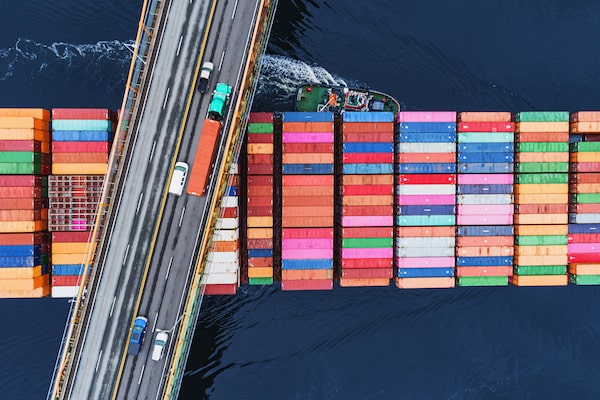
Investors have long looked to toll roads, airports, railways and commercial shipping for diversification and predictable cash flows.shaunl/iStockPhoto / Getty Images
Sign up for the Globe Advisor weekly newsletter for professional financial advisors on our sign-up page. Get exclusive investment industry news and insights, the week’s top headlines, and what you and your clients need to know. For more from Globe Advisor, visit our homepage.
There are few asset classes as important to the economy as infrastructure, which has become somewhat of a catch-all term used to describe assets that are critical to moving people, data, energy or commodities around the world.
“It doesn’t matter if we’re in a thriving economy or downturn, it’s capital that gets spent on high-priority assets,” says Jeffrey Johnstone, senior wealth adviser with Johnstone Wealth Management Group at National Bank Financial Wealth Management in Toronto.
“So, at a very high-level investment thesis, it’s an essential part of an overall portfolio,” he adds.
Investors, including the world’s largest pension funds and asset managers, have long looked to toll roads, airports, railways, commercial shipping and electrical systems to guard against inflation, diversify holdings and produce often-predictable cash flows.
Yet, during the past decade and a half, infrastructure has gone from largely a restricted market of government and institutional capital to one in which investors of all sizes can participate. The aftermath of the 2008 global financial crisis, when zero-bound interest rates drove fixed-income returns to historical lows, ignited a shift into global infrastructure among asset managers in search of yield and protection against market volatility.
Infrastructure has since matured into a stable and more accessible asset class with a market capitalization of more than US$1-trillion, according to Prequin, which tracks the sector. That’s a sixfold increase compared with the period around the global financial crisis.
The sector’s stability was particularly evident through the market tumult of the past couple of years.
The MSCI World Infrastructure Index returned a little more than 4 per cent in 2023 compared with a rise of more than 24 per cent for the total MSCI World Index. Yet, holders of the latter in 2022 would have experienced a decline of almost 18 per cent compared with a relatively flat performance from the infrastructure index.
“Stocks and bonds were down significantly. If you look at what the global infrastructure benchmark did, it was steady,” Mr. Johnstone notes.
Yet, global infrastructure appears to be entering a new cycle of large-scale investment that could reward patient investors.
Capital is pouring into new assets expected to be economic drivers for the foreseeable future such as renewable energy, fibre networks and data centres that many expect will deliver steady income for decades to come, says Christine Tan, portfolio manager at SLGI Asset Management Inc., Sun Life Financial Inc.’s mutual fund arm. The “reshoring” of supply chains is another theme investors are banking on to drive long-term sector returns.
“For some time, infrastructure was really a very boring asset class; you had your traditional toll roads, railways, airports, pipelines and the like. But now we’re building new kinds of infrastructure,” Ms. Tan says. “It’s exciting – there are trillions of dollars being invested in these assets.”
Those growth prospects have some investors shifting their infrastructure positions to overweight.
“We’ve been increasing our allocation,” says Martin Pelletier, senior portfolio manager at TriVest Wealth Counsel in Calgary, part of Wellington-Altus Private Counsel Inc.
Even if infrastructure delivers returns in the historical range of mid-single digits, its stable, uncorrelated profile looks attractive in an environment in which Mr. Pelletier sees long-term interest rates heading lower.
“Some people are looking at past returns and saying, ‘Why would I invest in this? I could just keep it in cash.’ Many investors are backward-looking instead of forward,” he says.
“We are saying those 5-per-cent [fixed-income] rates aren’t going to stay there forever, so what do we want to own in the next five years? Infrastructure is looking more and more interesting.”
Mr. Pelletier and others note that international exposure is paramount, given that big infrastructure projects are often global in scale, with opportunities outside North America.
While many Canadian investors have looked to exchange-traded funds (ETFs) for a cost-effective entry into global infrastructure, Mr. Pelletier says another option to consider is Brookfield Infrastructure Partners LP (BIP-UN-T), which he says is relatively undervalued.
“You’re getting a 5.5-per-cent dividend that’s sustainable, in our opinion, and getting growth beyond that – and we’re heading into an environment in which interest rates are coming back down again,” he says.
New private-market options have also launched in recent years, allowing non-institutional Canadian investors to invest in infrastructure assets through new vehicles that seek to replicate a conventional mutual fund’s characteristics, with lower purchase minimums, evergreen accessibility and more flexible redemptions.
Mr. Johnstone says he still prefers more traditional means of accessing the sector.
“There are definitely more products coming to market. People like to think that they’re promised liquidity, but at the end of the day, you don’t know if that’s the case until the rubber meets the road,” he says of private infrastructure funds.
“We like to stay with more liquid investments in the form of ETFs and individual holdings for our client base.”
For more from Globe Advisor, visit our homepage.